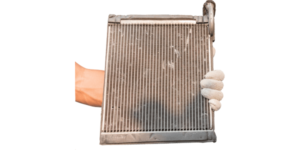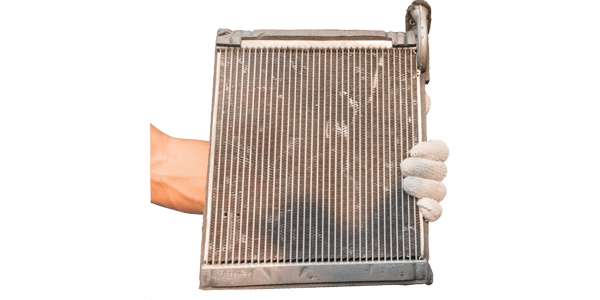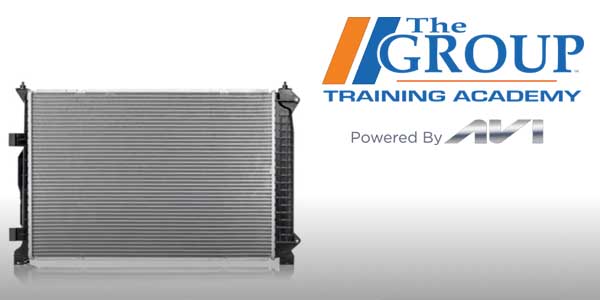 Warranty. It’s a dirty word to some, a promise of “free” parts for others. It all depends on which side of the counter you happen to be standing. While virtually all of our products carry some sort of warranty against manufacturer’s defect, many of our customers have unreasonable expectations of our warranty policies, believing that simple possession of a wrinkled old receipt (or worse yet, solemnly swearing that they purchased the part “right here, a few months ago”) entitles them to free replacement of whatever they desire, repeatedly, and until the end of time. With no questions asked.
Warranty. It’s a dirty word to some, a promise of “free” parts for others. It all depends on which side of the counter you happen to be standing. While virtually all of our products carry some sort of warranty against manufacturer’s defect, many of our customers have unreasonable expectations of our warranty policies, believing that simple possession of a wrinkled old receipt (or worse yet, solemnly swearing that they purchased the part “right here, a few months ago”) entitles them to free replacement of whatever they desire, repeatedly, and until the end of time. With no questions asked.
In my opinion, the best warranty is one you never have to use. Now, don’t get me wrong… I say that not only as a parts specialist, but also as a consumer. Warranty claims represent failure of a product that was purchased in good faith, with an expectation that it would provide reasonable service life. When that product fails unexpectedly, it sets in motion a string of inconvenient (and often costly) circumstances that ultimately lead consumers back to the retailer. In the case of truly defective merchandise, it is good insurance against the occasional piece that slips by the quality-control department. In those cases where the warranty is more reliable than the product it protects, I’d rather shop elsewhere.
Although we often deal in individual parts, it’s important to remember that these components are “parts” of complex systems, and system failures can cause an otherwise suitable component to fail unexpectedly. Radiators are a prime example of this concept. Radiators, condensers and other finned coolers are simple heat exchangers, with no moving parts. Very little can actually “go wrong” with these components, but radiator warranties continue to be an issue in our industry. Most warranty claims can be traced back to improperly maintained cooling systems, rather than a manufacturer’s defect.
Over-pressurization can cause bowing, ballooning or blowout failure of radiator tanks, which are not covered by most manufacturer’s warranty terms. A faulty radiator cap, or substituting a cap with the incorrect pressure rating than the original specification may contribute to overheating, especially when combined with low coolant levels. External coolant leaks from poorly maintained hoses or a worn out water pump not only inhibit heat transfer, they may allow air pockets to develop in the cooling system, further crippling the radiator’s ability to transfer heat, and allowing the coolant to vaporize into steam. Failed head gaskets also can lead to over-pressurization, as leaking combustion gasses build up within the cooling system. In extreme cases, the flat, narrow crossflow tubes of the radiator core can expand to the point that they restrict airflow through the radiator’s cooling fins.
Airflow restrictions also may be caused by buildup of mud, insects, road debris or other impact damage to the cooling fins. A few “fingerprints” from installation or normal handling will not adversely affect the radiator’s ability to flow-cool air, but large areas of crushed or smashed fins can be detrimental to efficient operation. Checking the condition of the replacement radiator before handing it across the counter is one way to help eliminate potential warranty complaints before they leave your store.
The condition and chemistry of the coolant mixture is a leading cause of the corrosion that destroys a radiator from the inside. With the introduction of “long-life” coolant, many customers have neglected the basic coolant flush, believing that these extended intervals mean that coolant doesn’t need their attention unless it is leaking. Use of the proper type of coolant (conventional, OAT or HOAT) is critical to system efficiency, and mixing of coolant types may shorten the service life of long-life coolants, leaving the system vulnerable to corrosion. Corrosion not only restricts the flow of coolant through the radiator’s narrow passages, but weakens the structure of the core. Electrolysis between the different types of metal used throughout the engine’s water jacket and other cooling system components also can be very damaging to aluminum radiators, as the coolant breaks down over time, and small electrical currents are carried through the system. This condition becomes more pronounced when the coolant is diluted with tap water, rather than the distilled water recommended (but rarely used) when performing coolant service.
We take a lot of heat behind the counter when it comes to radiator warranties, especially when we offer a “no-questions-asked” warranty policy. Handing out a free replacement radiator may temporarily appease a customer, but if the root cause of the failure is not corrected, the next failure (and the one after that) only serves to make the manufacturer and the retailer look bad.







